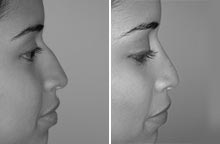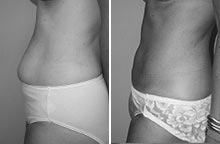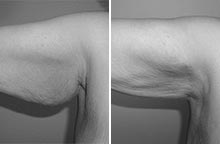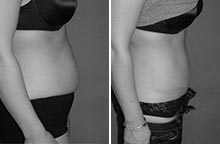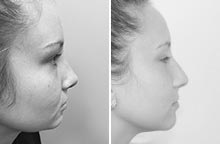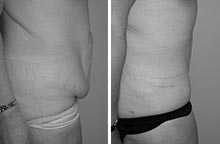Breast ptosis—more commonly known as breast sagging—can occur due to a variety of factors. As you age, you naturally lose skin elasticity, and the ligaments that support your breasts tend to weaken. Aging is the most common reason that leads to ptosis, along with significant weight fluctuations (especially weight loss), pregnancy, and breastfeeding—these factors also lead to dramatic changes in breast volume and skin stretching.
Additionally, genetic factors and lifestyle choices, such as smoking and lack of proper breast support, can exacerbate ptosis. Understanding these causes can help you take proactive steps to maintain breast firmness and consider appropriate treatments for your needs.
Did you know that ptosis can be broken down into degrees of severity? Knowing the degrees of ptosis can be very helpful if you are considering surgical options to address this issue. We will break down the different levels of breast sagging and how Dr. David Abramson and his staff can help. For more information about a surgical breast lift, schedule your consultation with Dr. Abramson today.
What Are the Degrees of Breast Sagging?
Breast ptosis is categorized into different degrees based on how far the nipple has fallen from its ideal position. Here’s a closer look at what are the degrees of breast ptosis:
Mild Ptosis
This is the mildest stage of ptosis. In this initial stage, the nipples are positioned just above the inframammary fold, which is the natural crease under the breast. This degree of sagging is often subtle and may not be noticeable to everyone. For the most part, mild ptosis can be managed with supportive bras and other non-surgical interventions—however, many patients opt to elect for surgical intervention at this stage to prevent further sagging.
The presence of mild ptosis is not strictly linked to a specific age—anyone can have mild ptosis. While age-related changes in skin elasticity and breast tissue are common as you get older, mild ptosis can also appear in younger individuals due to factors like weight fluctuations, pregnancy, or genetics.
Moderate Ptosis
At this stage, the nipples are at or slightly below the inframammary fold. Moderate ptosis becomes more apparent and may affect the overall contour of the breasts. Women experiencing moderate sagging might seek cosmetic breast procedures to restore a more youthful appearance.
Severe Ptosis
This is the most advanced stage of ptosis. If you have severe ptosis, you will notice that your nipples are positioned well below the inframammary fold, and your breast tissue may hang significantly. Severe ptosis often leads to more noticeable changes in breast shape and can impact self-esteem and comfort. Surgical options are commonly considered to address this degree of sagging.
Why Understanding the Degrees of Breast Sagging Matters
Knowing the degrees of breast sagging, and which stage might apply to you, can help you determine the most appropriate treatment plan. If you are considering plastic surgery to address breast sagging and ptosis, understanding the severity of your ptosis is key to helping you achieve the desired outcome.
Dr. David Abramson and his staff are experts in evaluating and treating breast ptosis. They offer personalized consultations to assess your condition and recommend the best course of action based on that consultation. If you’re concerned about breast sagging and want to explore your options, including for a full breast augmentation, schedule a consultation with Dr. Abramson today.
